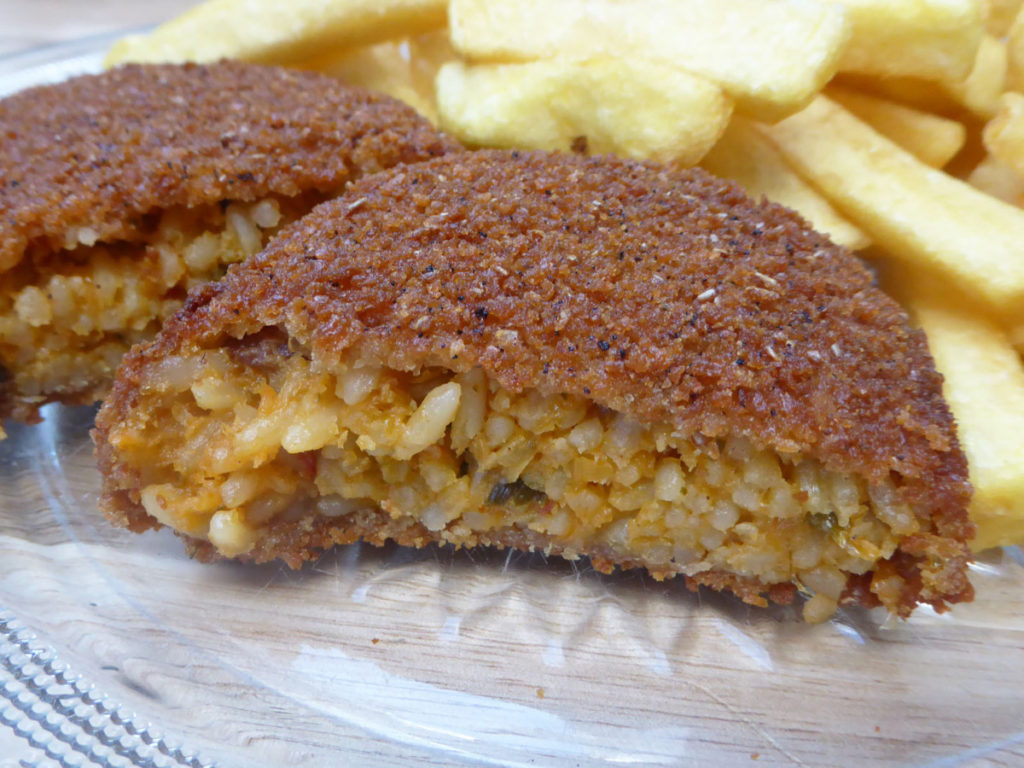Following on the series, we are taking a look at another popular favourite from a Dutch snackbar, the nasischijf and bamischijf. These are two different snacks, but share many similarities.

What is nasi and bami?
You may be familiar with nasi or bami if you have ever ordered Indonesian food here in the Netherlands; they are two of the common sides that come with most dishes. Nasi goreng (the official name for the dish) is cooked rice, that is then stir fried along with an herb mix, vegetables, egg and sometimes also small bits of meat such as chicken or pork. Every cook has their own personal preference for the vegetables that go into it, but often these are peas, carrot, red onion, red peppers and leek. Bami is the same dish but instead of rice they use noodles.
What makes it a ‘schijf’?
Schijf is the Dutch word for disk, so a nasischijf is nasi goreng pressed into a disk, of a similar size and thickness as a burger. It is not too compacted so it keeps the texture of the rice. The disk is then coated in breadcrumbs and deep fat fried (like most Dutch snackbar foods). And a bamischijf is the same thing but using bami goreng instead.
Home cooking
Making nasi or bami at home is easy. You can buy ready cut vegetable mixes, and herb packets to make the dish in less than 30 minutes. However taking it a step further to make your own nasichijf or bamischijf is a bit trickier. It can be difficult to shape it into a disk and have it keep its shape while not applying too much force.
You can also buy ready-made ones from the freezer section in the supermarket. They will be in the section with all the other Dutch snackbar foods. You can get them for deep fat frying at home, or to cook in the oven or air fryer. Bamischijf is easy to find, you get them in name brands such as Mora etc., while nasischijf (or sometimes called nasiblok) is less common.

Also in the series – Dutch snack bar top 10 dishes:
- Frikandel
- Kroket
- Bami-schijf
- Nasi-schijf
- Kaassoufflé
- Kipkorn
- Hamburger
- Gehaktbal
- Eierbal
- Loempia
 +31 (0)50 367 71 97
+31 (0)50 367 71 97  info@connect-int.org
info@connect-int.org